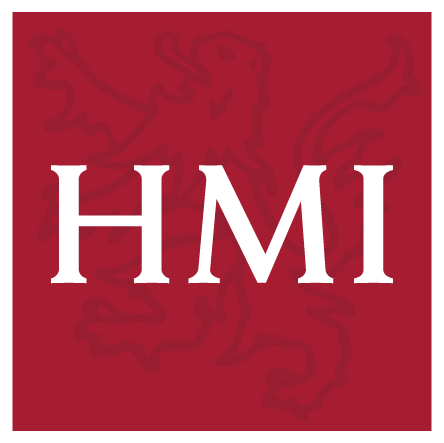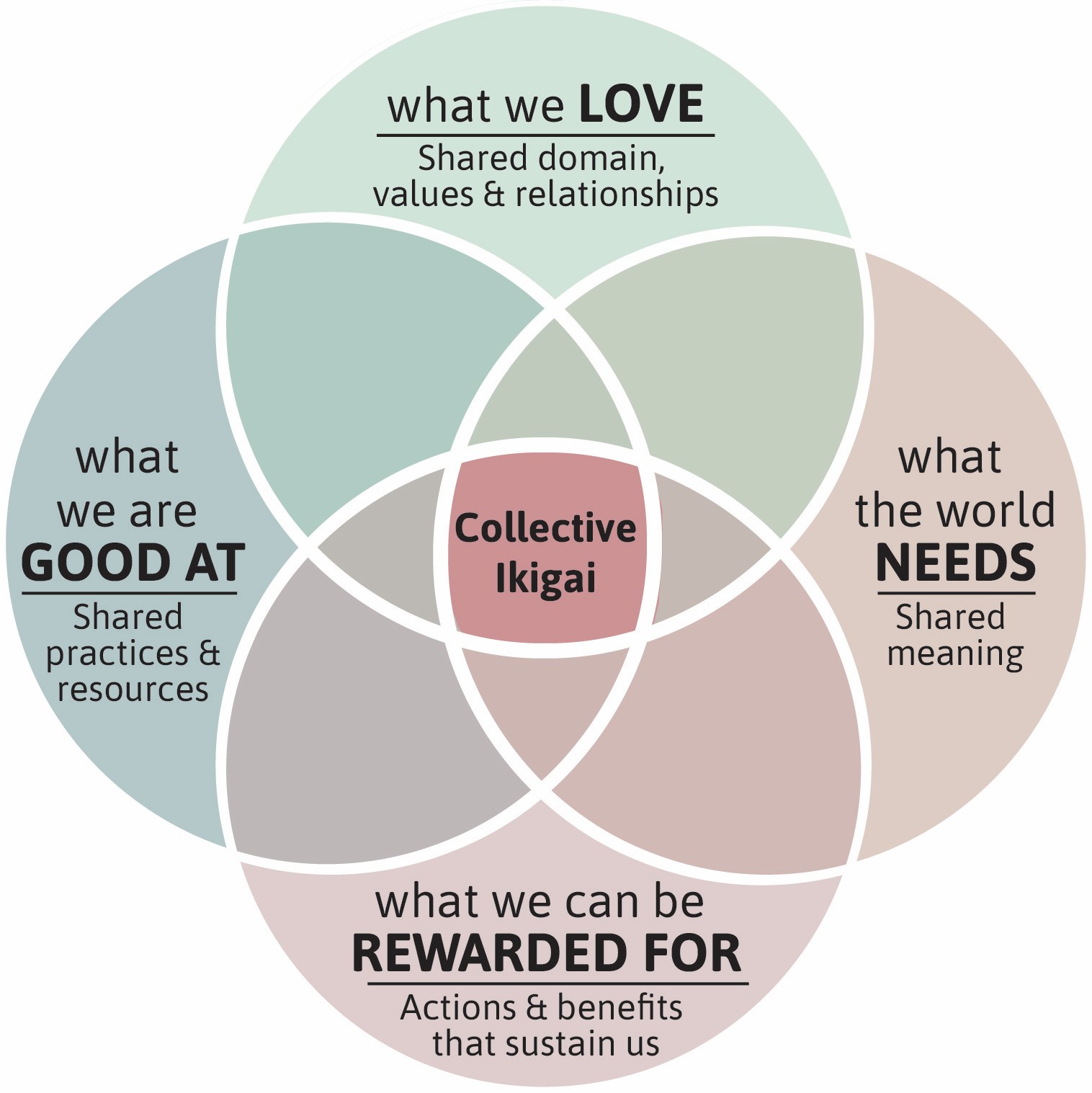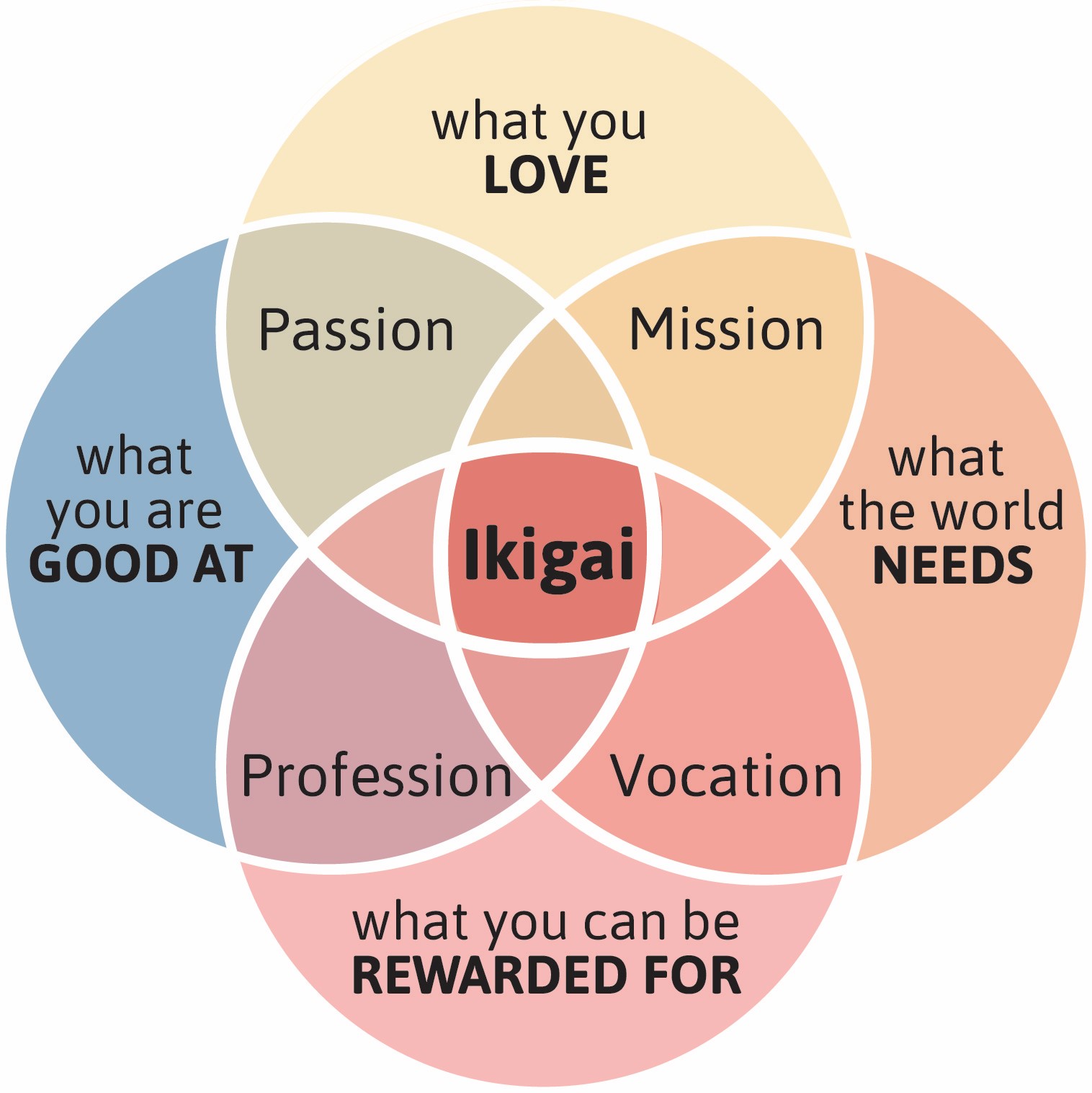What gets you out of bed each morning? Is it the promise of making a difference in a patient's life, the thrill of discovery, or perhaps the joy of teaching the next generation of healthcare professionals? With the relentless pace of health professions education, it is easy to lose sight of why we chose this path. Burnout has become an all-too-common reality, eroding passion, and diminishing the fulfillment that once drove us. But what if there was a way to reconnect with that original spark? To not only reignite your own passion but also inspire it in others?
Enter Ikigai – a Japanese concept that translates to “a reason for being.” It is comprised of 4 parts: passion, mission, profession, and vocation. In this blog post, we explore how embracing Ikigai can help health professions educators discover – or rediscover – their purpose and cultivate thriving communities built around shared vision and purpose. We will delve into practical ways to apply this concept both individually and collectively, offering a pathway to renewed meaning and resilience in our professional life.
Figure 1.: Image created by Rahul Anand, Stephanie Balint, and Miklos Fogarasi, April 2025
Ikigai for the individual
Ikigai is a reflective practice aimed at uncovering our essential purpose as individuals. It involves observing ourselves through a metacognitive process, noting and accepting ideas, and identifying situations, people, and motivations that bring us contentment or fulfillment. The journey begins internally and on a small scale, consistently focusing on the pursuit of humble excellence without much fanfare. If you are interested in Japanese concepts, Kodawari – the relentless pursuit of perfection – is another idea to explore.
Ikigai is about discovering what we love, excelling at it, and doing something that the world truly needs. Ideally, it also involves getting rewarded fairly for it, in the form that matters most to us—whether that's money, time, recognition, or new opportunities. Finding our Ikigai can help us wake up to life’s richness in our daily roles as educators and leaders. Moreover, it can serve as a guide for us at key crossroads, helping us find our way if we ever lose direction.
Examples of Applying Ikigai in Personal and Career Development
1. For Trainees:
Introducing Ikigai early in health professions training can provide trainees with a framework to transform their general passion for healthcare into concrete goals and help them develop the skills needed to make an impact and be rewarded. Revisiting Ikigai during leadership development sessions for clerkship phase medical students enables them to use both logic and emotion when deciding which specialty to pursue for a fulfilling career. It also assists them in articulating through personal statements how their chosen specialty aligns with their passion and strengths.
2. For Educators:
All three of the authors transitioned into medical and health professions education in search of more fulfilling roles after finding ourselves at crossroads in our journeys as full-time clinicians. By reflecting on what we love doing, what our profession needs, and where we can excel and be rewarded, we reimagined ourselves as full-time educators. Harvard Macy Institute’s Program for Educators in the Health Professions enhanced our Ikigai by providing us with the tools and the passion to excel in what we do.
3. For Clinicians and their Patients:
Whether it is the first session of a well-being program for faculty and staff, an initial visit with patients establishing care at an HIV clinic, or an invitation to initiate an end-of-life discussion with terminally ill patients, we include a straightforward question: “What do you live for? What matters most to you?” The responses resonate deeply with participants' "why," their sense of purpose, and can inspire individuals to make positive changes in their lives.
From my Ikigai to our Ikigai: Cultivating Ikigai in Communities
While Ikigai begins as a personal journey, its impact can extend far beyond the individual. As medical and health professions educators, we see people not for who they are, but for who they can become, and we nurture this transformation. How then can we extend the idea of Ikigai from individual fulfilment to collective flourishing in our classrooms, offices, and organizations? We propose that a fundamental competency for every educator and leader is to first connect with their own ikigai, then help others around them find their unique purpose, and ultimately cultivate teams and communities around a shared, collective Ikigai.
Humility, a commitment to a purpose without selfish desire, and the ability to celebrate the success of others may be the foundation for building harmony between an individual and their colleagues. While flow refers to a single person’s momentary contentment, our goal is to enable our learners and peers to experience enduring Ikigai as a group or community. Consequently, Ikigai can bring us closer to creating authentic communities of learning, practice, and purpose by fostering harmony with others and being mindful of their Ikigai. This approach has the potential to produce more engaged and motivated learners who are open to transformation, and more cohesive teams driven by a shared purpose.
Perhaps a community built in this manner, where members flourish, support each other, and find shared meaning, can cultivate a group Ikigai. If you have experienced a Harvard Macy Institute (HMI) course, you may have felt this dynamic, even if you couldn’t quite name it!
Integrating Concepts of Group Ikigai and Community of Practice
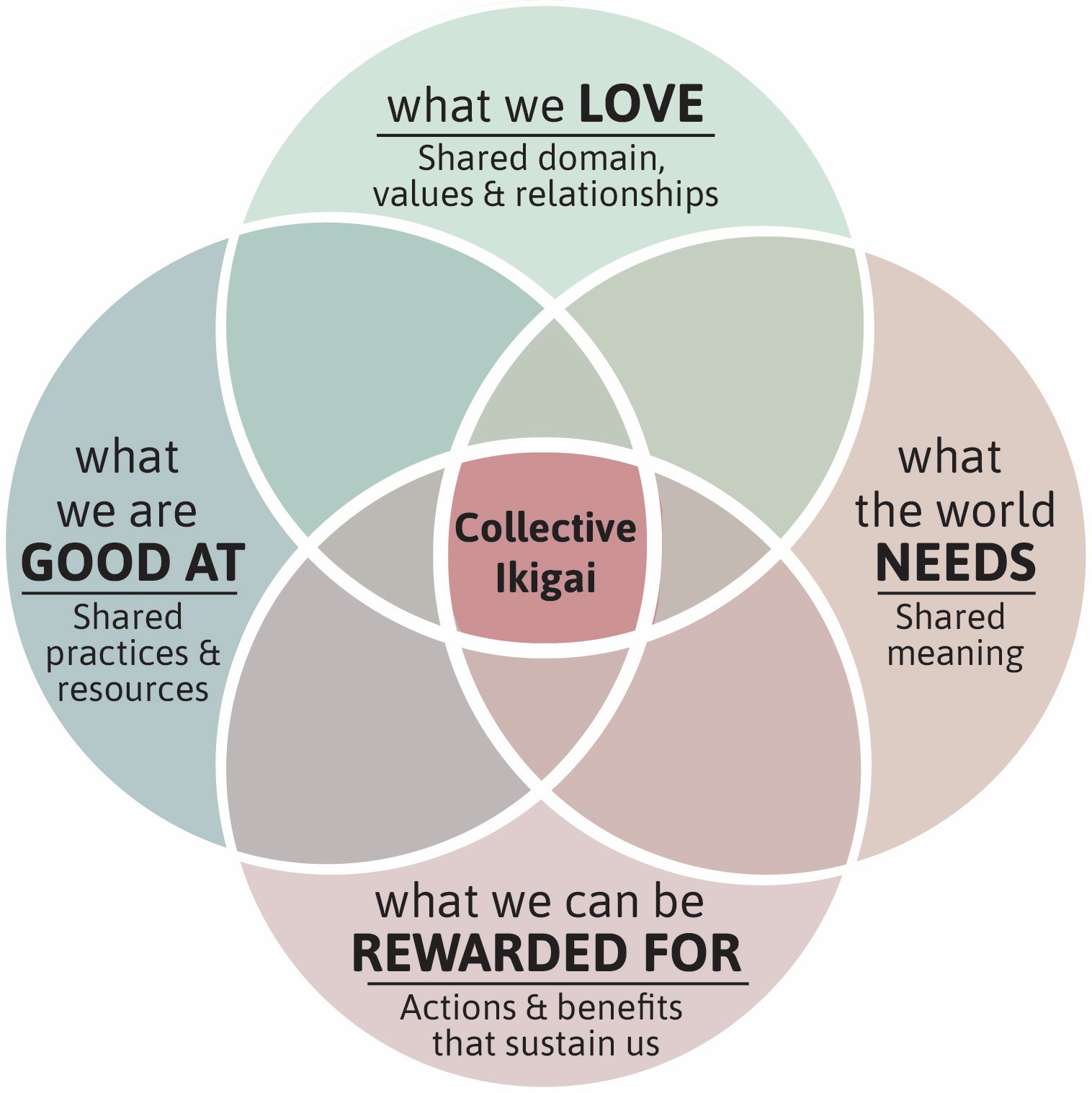
Figure 2.: Image created by Rahul Anand, Stephanie Balint, and Miklos Fogarasi, April 2025
Examples of Applying Ikigai to Groups
1. Building Faculty Teams Around a Shared Vision and Mission:
When forming our Microbiology team for pre-clerkship teaching, we collaboratively crafted a shared mission, vision, and values statement that reflected our collective Ikigai. This guided our decisions and actions through challenges, including the successful navigation of the pandemic. Establishing shared purpose early on can shape how a team functions and responds to obstacles.
2. Cultivating Communities of Practice:
A Community of Practice (COP) is simply a group of people who share a passion for a theme or purpose, and engage in developing themselves and supporting each other as they interact regularly over time. In building new COPs around shared interests like Leadership, Lifestyle Medicine, and Cancer Survivorship, we applied the lessons from the HMI Community at our school. By uniting people through shared purpose and values, we empower them to support and develop one another, as a CoP.
So, is group Ikigai possible? We believe it is. It begins with each of us reflecting on our own Ikigai, encouraging others to explore theirs, and learning to appreciate their journeys. Together, we can build communities that not only educate but also inspire and transform. As the flames of burnout flicker at the edges of our professional lives, we have the opportunity to ignite a different kind of fire—a passion rooted in purpose and shared meaning. It is time to embark on this new path. Now. Ganbatte! Get going, do your best, and do not give up!
Conclusion
Rediscovering our purpose through the lens of Ikigai offers a transformative pathway for educators and healthcare professionals. When we embrace our own Ikigai individually, we become more engaged, more inspired, and consequently more resilient. By helping others find their unique purpose and cultivating teams around shared values and missions, we foster environments where everyone thrives. It is about moving from "me" to "we," building communities where collective Ikigai becomes a powerful force against burnout and disconnection.
Acknowledgement
The authors thank Stephanie Balint, MSN, for designing the graphics included in this blog post.
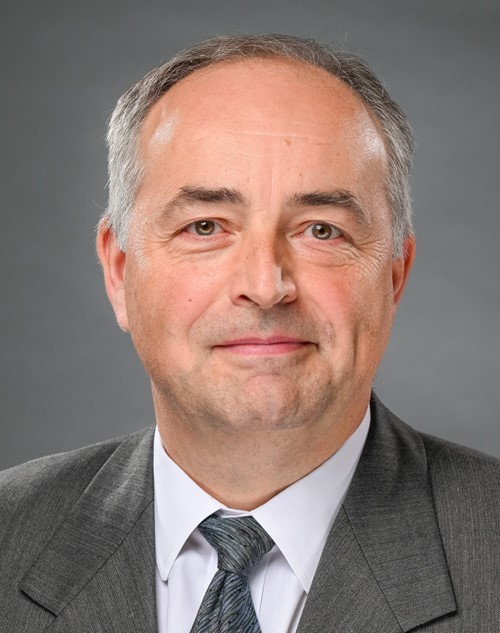
Miklos Fogarasi, MD (Educators ’18) is Associate Professor of Medical Sciences at the Frank H. Netter MD School of Medicine at Quinnipiac University and a board-certified Hematologist-Oncologist. HMI has made an impact on Miklos’s career by allowing him to set new educational goals in his work through providing him with a whole new set of pedagogical tools. Miklos’ areas of professional interest include cancer survivorship, active learning strategies and factors influencing the learning climate. Miklos can be followed on LinkedIn or contacted via email.
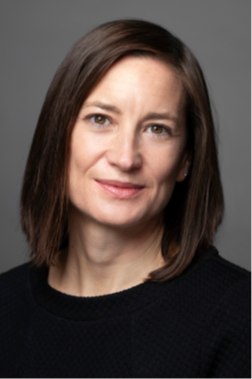
Rebecca Zucconi, MD (Educators ’21) is Associate Professor of Medical Sciences at the Frank H. Netter MD School of Medicine at Quinnipiac University and a board-certified Obstetrician and Gynecologist. HMI has made an impact on Rebecca’s career by connecting her with educators from around the globe who share a vision for prioritizing humanism in medical education. Rebecca’s areas of professional interest include women’s health and career advising. Rebecca can be contacted via email.
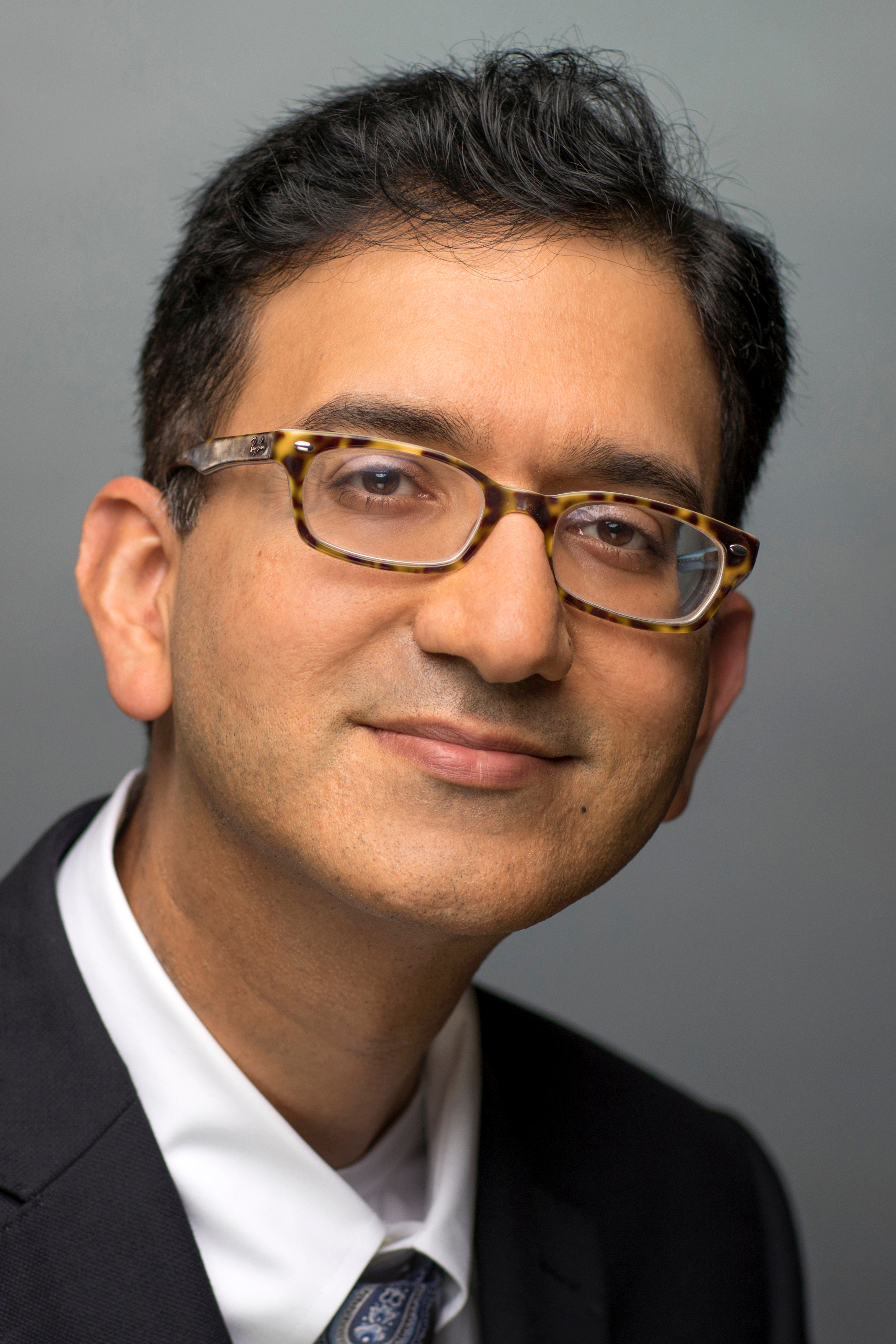
Rahul Anand, MD, MBA, MSCI (Educators ’21; Leaders ’22) is Professor of Medical Sciences at the Frank H. Netter MD School of Medicine at Quinnipiac University and an Infectious Diseases physician. HMI has impacted Rahul’s career by helping him advance his Ikigai in health professions education through its life-changing programs, design thinking frameworks, and the nurturing HMI community. Rahul’s areas of professional interest include leadership development, health systems science, and infectious diseases. Rahul can be followed on LinkedIn or contacted via email.
HMI Staff
